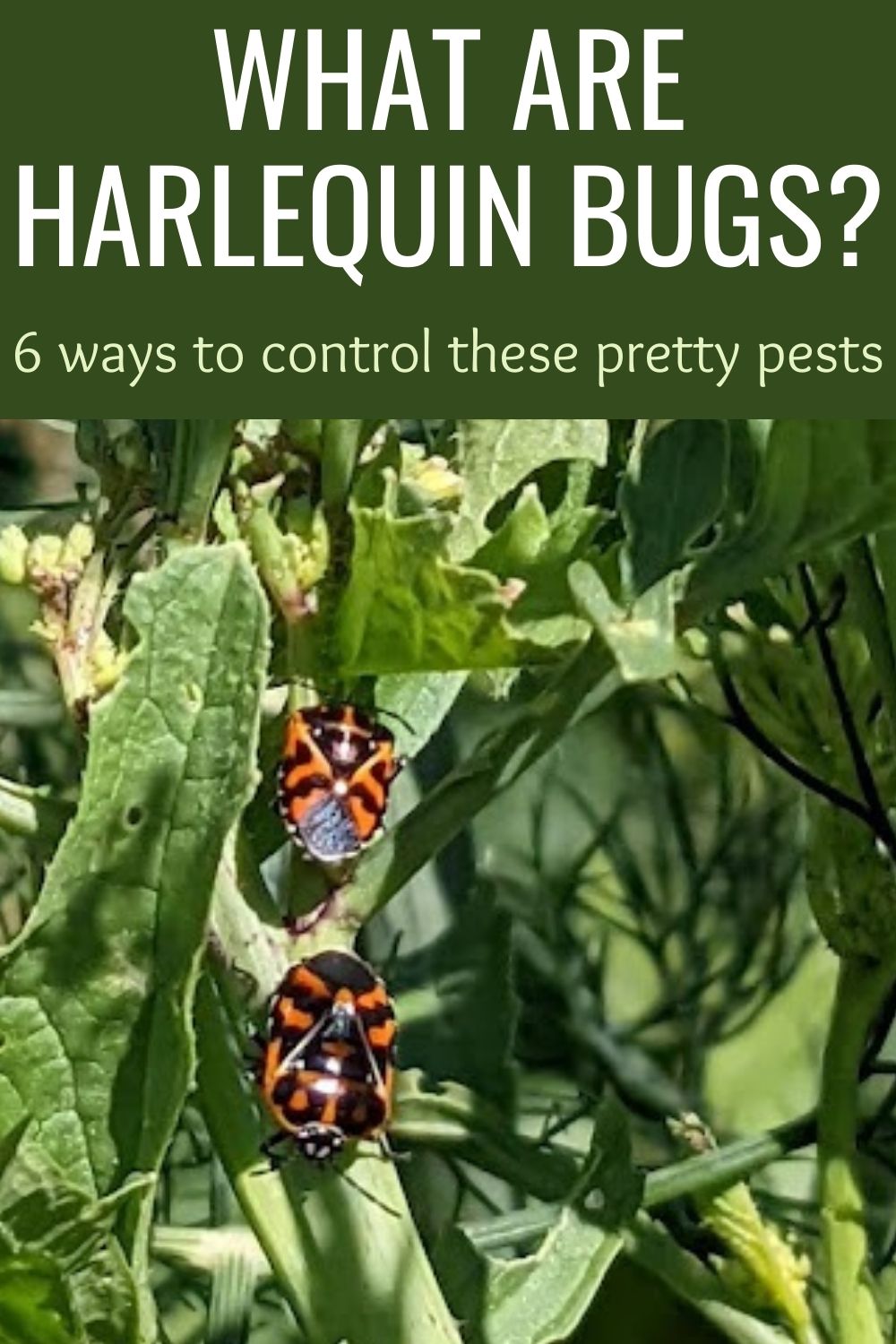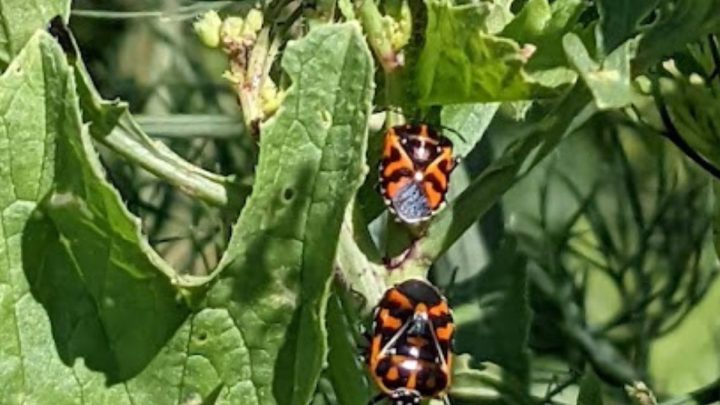What are those brightly colored, shield-shaped insects in the vegetable garden? Are they friends or foes? Looking something like a fancy stinkbug, harlequin bugs suck the nutrients out of plant leaves and can devastate an entire crop if not controlled. This invasive pest spread to the United States from Mexico soon after the Civil War and currently ranges as far north as Pennsylvania and Colorado and from coast to coast.
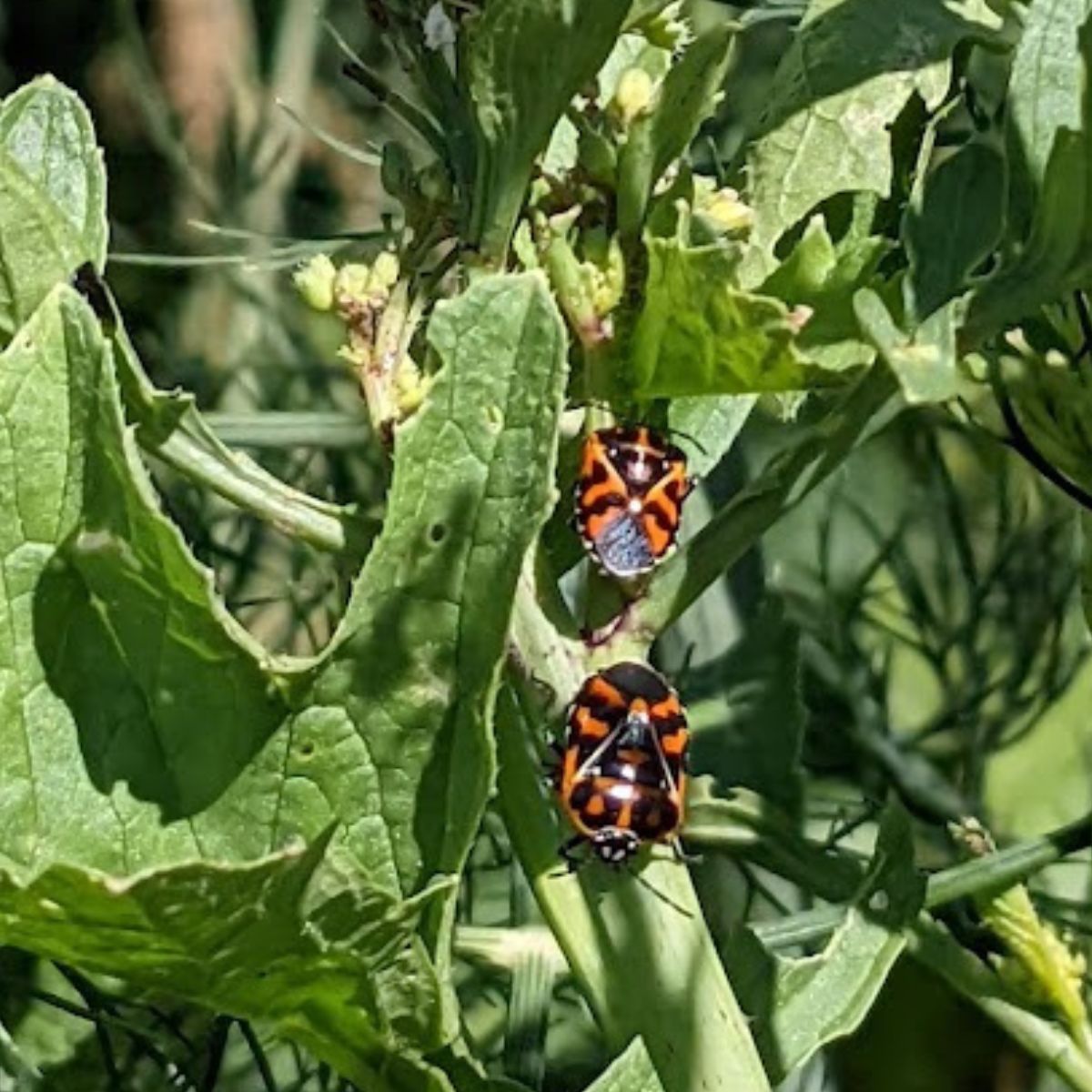
What Are Harlequin Bugs?
A member of the stink bug family, harlequin bugs (Murgantia histrionica) are shield-shaped as adults and have black and red, orange, or yellow markings. They reach just under a half-inch long at maturity.
Here’s how to get rid of stink bugs from your garden.
More how to get rid of garden pests guides.
How to save your vegetables, herbs, and flowers from pests and diseases
What is the harlequin bug life cycle?
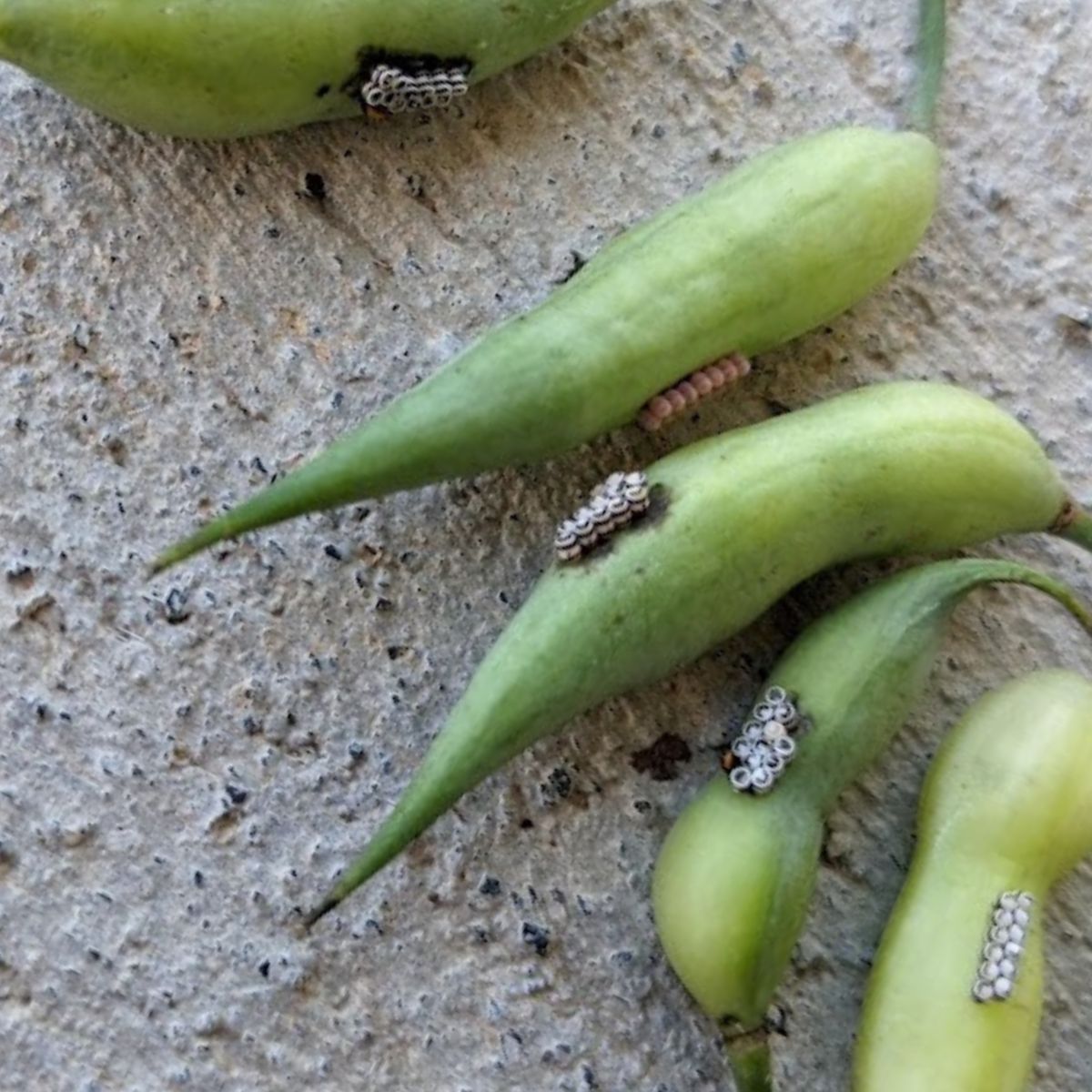
Because harlequin bugs have a life cycle of 50 to 80 days, up to three generations can occur in your garden in a single year given ideal conditions. In the spring, you may begin seeing tiny, barrel-shaped eggs with black and white stripes clustered on the undersides of leaves. These hatch in four to 29 days, depending on the temperature.
When they hatch, harlequin bug nymphs are perfectly round and pale orange with black markings. As they molt through five or six instars, they progress to a showy pattern of black, white, yellow, and red.
Adults appear as described above, with a more angular shape and distinctive lines where the wings overlap on the back. They overwinter in crop residue, leaf litter, and other organic debris near host plants and emerge in early spring when the weather begins to warm to mate and lay eggs.
What do harlequin bugs eat?
Harlequin bugs typically favor plants in the brassica family, such as cabbage, broccoli, cauliflower, Brussels sprouts, collards, kale, radishes, mustard, turnips, horseradish, and kohlrabi. However, they may also be found on beans, tomatoes, potatoes, eggplant, okra, asparagus, beets, fruit trees, ornamentals like spider plants or sweet alyssum, and other plants.
What does harlequin bug damage look like?
Both nymph and adult harlequin bugs feed by piercing plant tissue and sucking out the fluids. Damage from harlequin bugs appears as white, yellow, or brown spots on leaves. Overall, plants look wilted or stunted, and heavy infestations may cause browning or even death of the plant.
How to Control Harlequin Bugs
A wide range of control methods exists to get rid of harlequin bugs. While any one of the following options will reduce the population of harlequin bugs in your garden, a combination of two or more — a practice called integrated pest management — will be the most effective against larger infestations of this pest.
This book is a must-have if you wish to keep your garden pest-free without chemicals! The Organic Gardener’s Handbook of Natural Pest and Disease Control: A Complete Guide to Maintaining a Healthy Garden and Yard the Earth-Friendly Way
1. Hand-picking
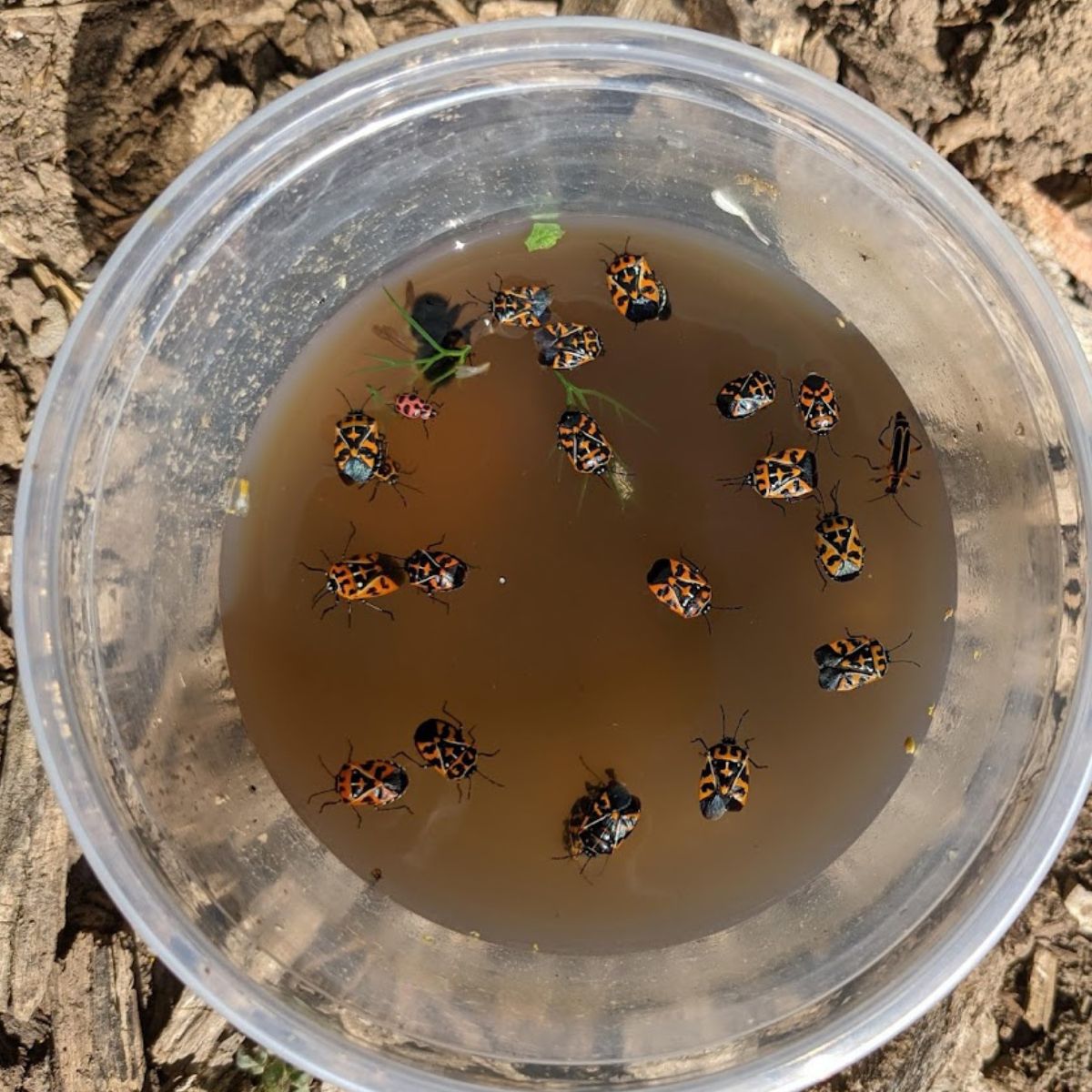
In home gardens, hand-picking is often an effective pest management practice. Periodically walk through the garden with a cup of soapy water, and drop in any harlequin bugs you find. Make sure to look under leaves for eggs, too, crushing or dropping them into the soapy water. Of course, you can just crush the bugs, but I prefer the less icky cup method when I hand-pick insect pests.
2. Cleaning up
Since harlequin bugs overwinter in organic debris, removing crop residue will help make your garden less inviting as a winter home for the pest. At the end of the growing season, clean up all plant debris and place it in a weed or burn pile well away from the garden. Take special care to do this with brassicas, since they are favorites of harlequin bugs.
3. Trap crops
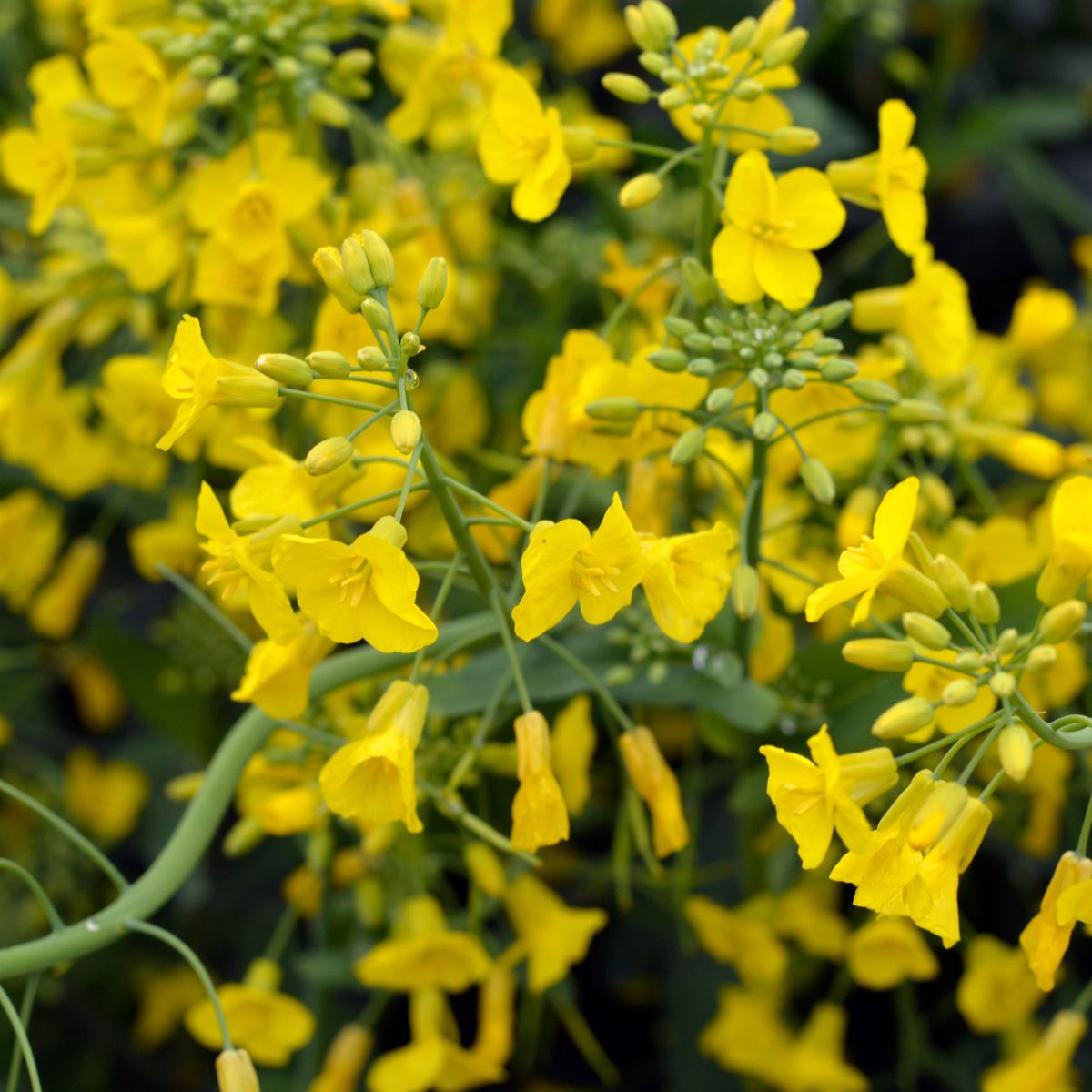
In very early spring before planting your main crop, or in fall after harvesting, plant a trap crop of brassicas like mustard, kale, radishes, or turnips. Fast-growing plants work best. This trap crop will attract the harlequin bugs to a concentrated area so you can then apply insecticide (see number 6) or burn the pests and trap crop with a flame weeder.
4. Weeding
Harlequin bugs also feed on weeds like wild mustard, shepherd’s purse, and pepperweed. So in addition to cleaning up crop residue, you will want to keep your beds and paths well weeded to reduce overwintering habitat for these brassica-loving pests.
5. Row cover
Prevent harlequin bugs from ever reaching your crops by using row cover. This works well on brassicas, which do not require pollination because we don’t grow them for fruits. Place row cover over your crops as soon as you plant them to exclude not only harlequin bugs but cabbage butterflies and other pests as well.
6. Insecticide
I always recommend trying other methods before resorting to insecticide. But if nothing else seems to work, and you have an overwhelming harlequin bug infestation, it might be time to consider insecticides. Always look for OMRI-certified organic options. Pyrethrin and spinosad have both been found effective against harlequin bugs, but keep in mind that these broad-spectrum insecticides kill beneficial insects, like bees, as well as pests.
Whether you’ve spotted zebra-striped eggs on your brassica leaves or the flashy, shield-shaped adults chowing down on your crop, you’ll want to take action against the harlequin bugs in your vegetable garden. Using two or more of the control methods listed above will help rid your garden of these pretty pests so you can enjoy your home-grown veggies when harvest time comes!
